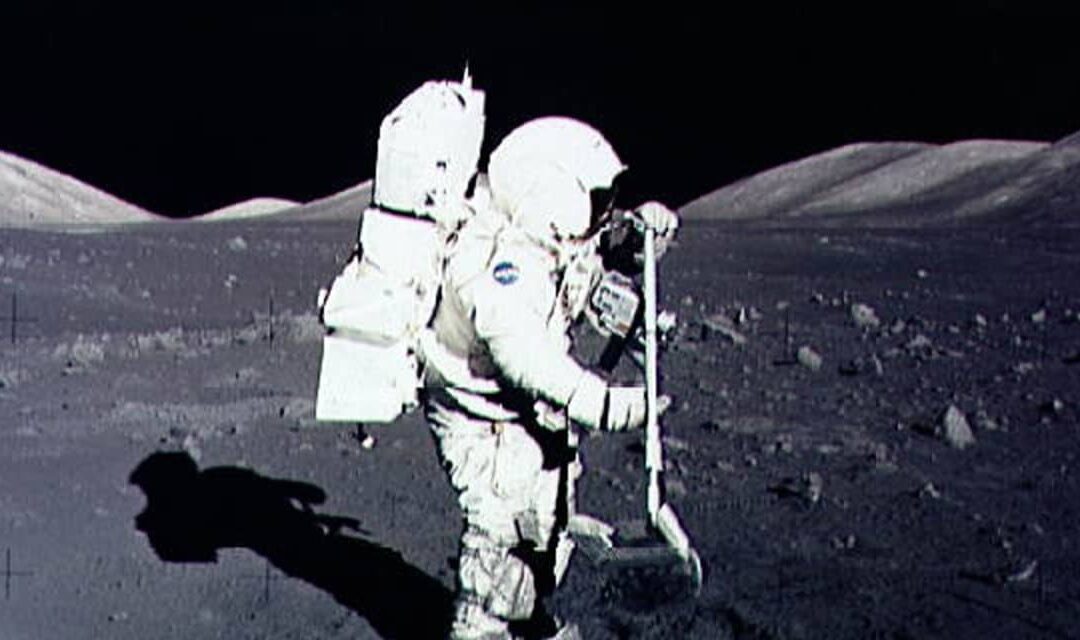Intuitive Machines Inc.’s historic attempt to place the first U.S. commercial lander on the lunar surface marks an important step for U.S. space exploration, according to Harrison Schmitt, the most recent living person to walk on the moon.
“The more information we can gain about the surface of the Moon, the better it will be for integration of its vast energy and materials resources into the U. S. economy,” the Apollo 17 astronaut told MarketWatch, via email. “China’s leadership understands this better than ours, by the way.”
China, which has been ramping up its space program, has landed a series of probes on the moon in recent years. In 2019 China also became the first country to land a rover on the far side of the moon.
Related: Moon launch sends Intuitive Machines shares skyrocketing
Intuitive Machines’
LUNR,
Nova-C lunar lander launched atop a SpaceX Falcon 9 rocket early Thursday. The lander, which is named Odysseus, after the hero of the Odyssey, is scheduled to land on the moon’s south pole on Feb. 22, according to NASA.
In addition to being the first U.S. commercial lander on the moon, Nova-C would also be the first U.S. spacecraft to land on the moon since Apollo 17’s Challenger lunar module in December 1972.
Schmitt was Apollo 17’s lunar module pilot and became the first scientist, and 12th person to step on the moon.
Former NASA astronaut and crew member of Apollo 17, Harrison Schmitt, pictured in 2015.
Agence France-Presse/Getty Image
Related: These are the space stocks to keep an eye on in 2024
In the almost 52 years since Schmitt walked on the moon, the space-exploration landscape has changed dramatically with the emergence of commercial space companies such as Intuitive Machines, Elon Musk’s SpaceX, Jeff Bezos’ Blue Origin, Rocket Lab USA Inc.
RKLB,
Planet Labs PBC
PL,
Momentus Inc.
MNTS,
and United Launch Alliance, which is a joint venture between Boeing Co.
BA,
and Lockheed Martin Corp.
LMT,
Moving forward, Schmitt would like to see tax incentives for space exploration. Corporate tax incentives for exploration “would be helpful in the near term so the private sector can move quickly and successfully in the new Cold War era,” he told MarketWatch.
“The IM-1 mission Nova-C class lunar lander continues to be in excellent health, in a stable orientation and remains on schedule for a lunar landing opportunity on the afternoon of February 22,” wrote Intuitive Machines on X, formerly known as Twitter, Friday.
Related: Rocket Lab’s stock on pace for 9-month low as launch postponement hits revenue
Intuitive Machines’ IM-1 mission is carrying NASA science and technology instruments focusing on plume-surface interactions, space-weather and lunar-surface interactions, radio astronomy, precision-landing technologies and a communication and navigation node for future autonomous-navigation technologies, according to the space agency.
Commercial moon landings are considered important scouting missions for the Artemis program. Last month, NASA said it is targeting September 2025 for its first crewed Artemis mission around the moon and September 2026 for its Artemis mission to land astronauts near the lunar south pole.
The Nova-C lander will land near a lunar feature known as Malapert A, according to NASA. “This relatively flat and safe region is within the otherwise heavily cratered southern highlands on the side of the Moon visible from Earth,” the space agency said, on its website. “Landing near Malapert A will also help mission planners understand how to communicate and send data back to Earth from a location where Earth is low on the lunar horizon.”
Related: Private moon lander’s historic moon mission in jeopardy amid ‘critical loss of propellant’
The launch was timed for the monthly lunar-blackout period. Nova-C will land near the moon’s south pole, where the correct lighting conditions are available for only a few days each month.
But complex lunar missions in particular bring a high level of risk. Last month, private U.S. space company Astrobotic Technology ended its troubled mission to place a lander on the moon.
Also in January, Japan’s Smart Lander for Investigating Moon, or SLIM, successfully landed on the moon, but the probe appeared to be upside down on the lunar surface in an image taken by SLIM’s rover.
Intuitive Machines’ shares rose 12.2% Friday, compared with the S&P 500 index’s
SPX
decline of 0.3%.
Related: Virgin Galactic ‘blasting off to positive cash flow in mid-2026,’ analyst says









